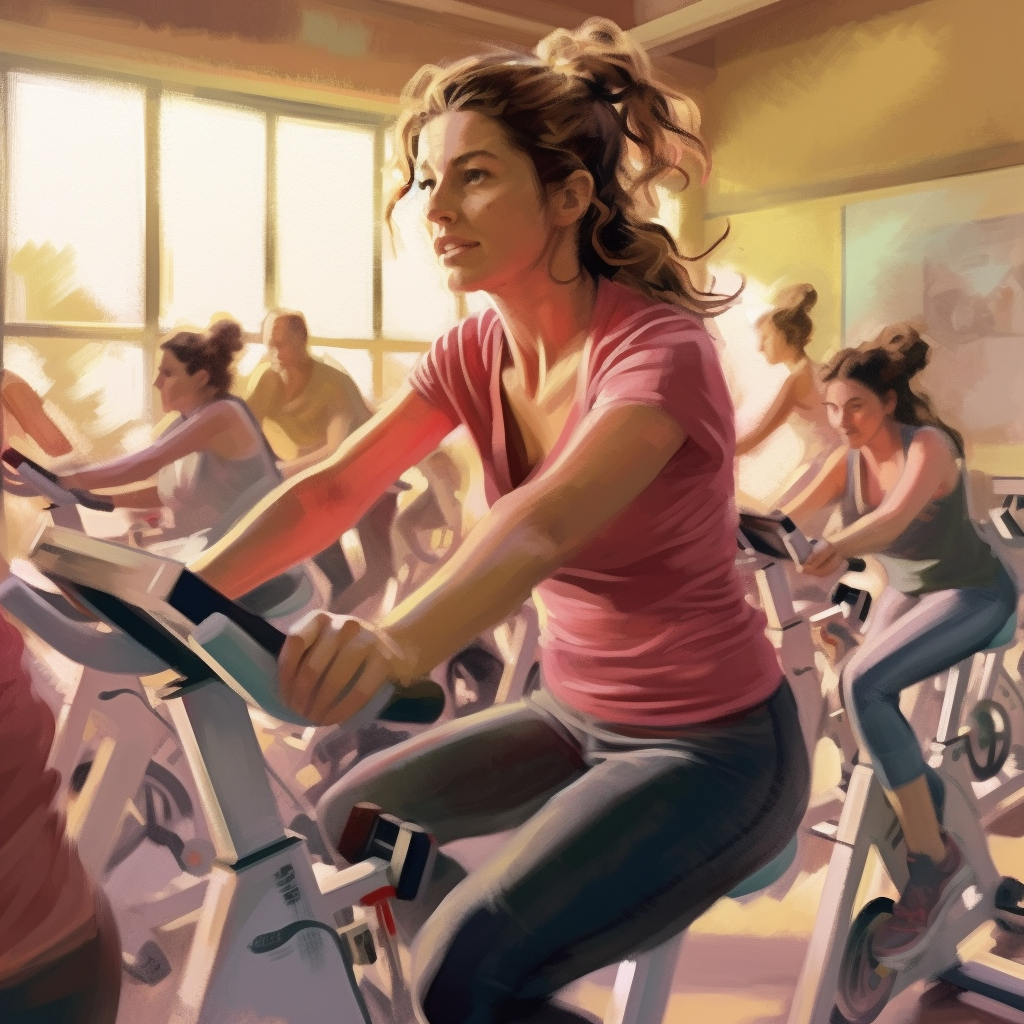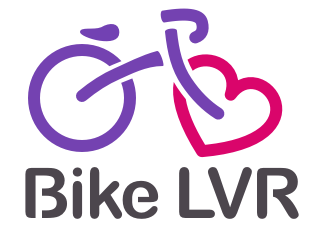
Everyone starts somewhere. This is true in all aspects of life, including cycling. When it comes to self-improvement, cycling is an effective and efficient way to better your physical and mental health. Even short trips can benefit your cardiovascular health.
Beginner cycling can be a daunting activity for those who are new to it. With so many different types of bikes, gear, and techniques to learn, it’s easy to feel overwhelmed.
One of the most important things for beginners to keep in mind is to start slowly and gradually build up their endurance. This means starting with shorter rides and gradually increasing the distance and intensity over time.
How to Build Confidence?
Before you begin, make sure your bike is ready for the adventure. Don’t start your journey with worn brake pads, tires, or chains. You do not have to spend extra money on expensive gear as a beginner. Instead, make sure you have some padded cycling shorts and moisture-wicking fabrics. Helmets may be a no-brainer, but make sure that yours is properly fitted.
5 Tips on Building Confidence:
- Start with short bike rides and gradually increase distance and difficulty as you become more comfortable.
- Practice basic bike handling skills, such as braking and shifting gears, in a safe and controlled environment.
- Ride with a friend or join a cycling group to gain confidence and learn from more experienced riders.
- Set achievable goals and track your progress to build confidence and motivation.
- Focus on proper form and stretching to reduce the risk of injury.
Plan for the First Week
Your first week is critical to starting a new fitness plan. It takes between 18 and 54 days to establish a habit. When you’re new to cycling, the first week could make or break you. If you’re miserable at the onset, you probably won’t continue long enough to make riding a part of your lifestyle.
When you cycle too hard at once, you may want to drop your bike off at a pawn shop on your way home. Hitting intense inclines out of the gate will wear you down before you’re able to see cycling as a challenge. You need to set reasonable goals for yourself.
Embrace being a beginner. No one expects you to be an expert. If you already cycle occasionally, plan to consistently increase your time. Do not focus on mileage and instead try to cycle about 10% more! If you do not bike at all, then shoot for about 30 to 60 minutes at a time about three to five times a week.
Your initial pace should be conversational. This means that if you ride with a partner, you can carry on a conversation and speak in full sentences with one another. You want to stay at a moderately intense pace.
Plan for the Month
Every week, take a rest day. If you have work during the week, try to add extra time to your weekend rides. Longer times allow for more training stimulus. Training stimulus aids in your body’s ability to grow stronger and to adapt to your routine. If there is a cycling community in your area, you may choose to connect over your first month. When you ride with experienced cyclists, you are more likely to pick up new skills and gain confidence.
Plan for the First Three Months
While time matters at first, you may stop seeing improvement if you only focus on how long you ride throughout the week. A lot of people don’t have the time to ride more than 10 hours a week. Others may only manage about six. To prevent plateauing, you can increase the intensity of your workout. Interval training involves alternating between high-intensity exercise and recovery periods. Set your own goals for interval training. Your intervals could be easy, challenging, or anywhere in between.
As a beginner, start with a tempo workout. Tempo is more difficult than your cruising endurance, but you can still speak in short sentences. Start your tempo workouts at about 15 minutes. Eventually, you can reach 60 minutes.
Once you master tempo, you can move onto a steady state. For a steady state, you work out for 10 to 20 minutes at your maximum output. Maximum output is when your breathing is deep, and you can only speak in short phrases.
How To Determine You’re Riding Too Much
When you start cycling, you may think that there’s no such thing as riding too much. After all, cycling is great for your physical fitness! Remember that you can have too much of a good thing. To answer how much cycling is too much, you have to pay attention to your body.
Mental Fog and Fatigue
When you train, you break down energy. If you’re in a constant state of stress or if you’re working out too much, you’re going to feel fatigued. You may lose your ability to focus or perform tasks that require mental energy. It’s normal to feel tired after an intense workout, but you may be overworking your body if you feel fatigued all of the time.
Give yourself time to rest and recover. Additionally, if you train without nourishing your body, you will also feel consistently tired. Remember that healthy eating is important, no matter your workout schedule.
Pain and Soreness
Muscle soreness is normal when you start cycling. It’s also normal whenever you challenge yourself physically. When you’re doing interval training, pay attention to your body’s pain response. You should not experience muscle strain or any sharp or intense pain. Some people think that if they push themselves past their limits, they’ll become stronger. The reality is that you can seriously injure yourself.
You could tear your muscles or develop other overuse injuries. If you do injure yourself, make sure to rest and heal properly. Do not jump back on the bike until you are better to reduce the risk of hurting yourself.
Sleep Disturbances
Often, we expect working out to help us sleep at night. Too much training can cause your stress hormones to be out of balance. When this happens, it becomes difficult to rest at night or to let go of the tension you had during the day. Your body requires rest to repair itself. Without quality sleep, you could develop mood changes, fatigue, and other symptoms.
Lost Motivation
Did you start with a lot of motivation and notice it drop off suddenly? When you overtrain, you lose your motivation too. It could be because your body is exhausted or that you’re mentally exhausted. No matter the reason, burnout is real. Ask why did you start to ride in the first place? Fitness? Get away from the computer? Enjoy the 40 mile rail trail? Hang with friends?
Difficulty Cycling
When you overtrain, you may stop improving. It may feel like you reach a plateau, or you may feel your abilities decrease. Overtraining reduces your reaction time, strength, and agility. Workouts that you could do before may suddenly feel more challenging. It can feel like you are working harder than before. Likewise, your heart rate may increase while cycling and could remain high during rest.

Cycling Hydration & Comfort
Hydration
Proper nutrition and hydration are key components of any cycling training program. Eating a balanced diet that includes carbohydrates, proteins, and healthy fats can help fuel your rides and aid in recovery. It is also important to stay hydrated before, during, and after your rides.
If you are on shorter bike rides, a water bottle will suffice. However, if you’re on a long ride, you may want to have a sports drink. You can lose electrolytes during long rides that water cannot replace. A general rule of thumb is to drink at least one bottle of water per hour of riding. Additionally, incorporating electrolyte supplements or foods high in electrolytes can help prevent cramping and aid in hydration.
Caffeine and Hydration
Caffeine can be a performance booster for cyclists, as it has been found to increase endurance and reduce perceived exertion. However, it is important to balance caffeine intake with proper hydration. Consuming too much caffeine without enough water can lead to dehydration and negative side effects.
One strategy is to consume caffeine in the form of coffee or energy gels before or during your ride, and to pair it with regular water intake.
Have Your Bike Fitted
If you have the wrong size bike, you’ll begin to feel it. When you cycle, you’re not supposed to experience knee, back, or neck pain. Some riders complain of numbness in their hands and arms too. If you experience any of these issues, it could be a problem with the size of your bike.
Beginners often need help from bike shops to ensure the proper fit. Everyone has a different body, and so everyone has different needs. You may have a friend who loves his or her bike and swears by it, but it may not be right for you.
You can test your bike’s size by testing where your legs are when seated. Your legs should extend while pedaling, and you should have no trouble reaching the handlebars. Your arms should never be strained, and your elbows should stay slightly bent.
Stretch Before a Ride
You may have heard that you should always stretch before a workout. If you do not stretch, you have a high likelihood of developing overuse injuries and muscle cramps. Make sure to stretch your quadriceps and hamstrings. These are the muscles that experience that give cyclists the most trouble.
Suppose you experience a cramp while on a ride; take a break. Never try to ride through the pain. Use your knuckles to loosen the muscles. You can also try foam rollers to give yourself a massage if cramping becomes an issue.
Find the Right Saddle
Your bike’s saddle should be comfortable. An uncomfortable saddle may lead to numbness and pain while riding. You may also develop sores. While there are creams available to help with cycling sores, your best option is to find a new saddle. There are saddles with wide backs and cutouts that decrease pressure. When at a bike shop, be open about the issues with your seat. Bike shop owners have heard it all!
Cycling can be a fulfilling, exciting hobby that introduces health and fitness into your lifestyle. If you’re a beginner, don’t be afraid to start slow. Everyone has a starting point. Even professional cyclists started where you are! It is possible to overdo it, especially as a beginner. Listen to your body and recognize the signs of overtraining.

Why Keep Cycling? 🏆
We all over do it. Remember that Cycling is a great way to stay fit and healthy. It provides a low-impact workout that can be enjoyed by people of all ages and fitness levels. Here are six reasons to keep riding even when you might not feel like it:
Cardiovascular Health 💓
Cycling is an excellent form of cardiovascular exercise. It strengthens the heart and lungs and improves overall cardiovascular health. Cycling regularly can reduce the risk of heart disease, stroke, and high blood pressure.
Weight Loss ⚖️
Cycling is an effective way to lose weight. It burns calories and helps to build muscle. Cycling can help to speed up the metabolism, which can lead to weight loss.
Low-Impact Exercise 🚲
Cycling is a low-impact exercise, which means that it puts less stress on the joints than other forms of exercise. This makes it an ideal exercise for people who have joint problems or who are recovering from an injury.
Mental Health 😇
Cycling is also good for mental health. It can reduce stress and anxiety and improve mood. Cycling outdoors can also provide a sense of freedom and relaxation.
Environmentally Friendly 💯
Cycling is an environmentally friendly mode of transportation. It produces no emissions and does not contribute to air pollution. Cycling can also help to reduce traffic congestion and make cities more livable.
Cost-Effective 💵
Cycling is a cost-effective mode of transportation. It requires no fuel and very little maintenance. Cycling can also save money on transportation costs and gym memberships.
Overall, cycling is a great way to stay fit, healthy, and environmentally conscious. It provides numerous benefits and can be enjoyed by people of all ages and fitness levels. It’s natural to feel excited when starting a new hobby, but it’s important to listen to your body and resist the urge to push too hard. Striving for moderation and balance will help you build a enjoyable cycling routine.
